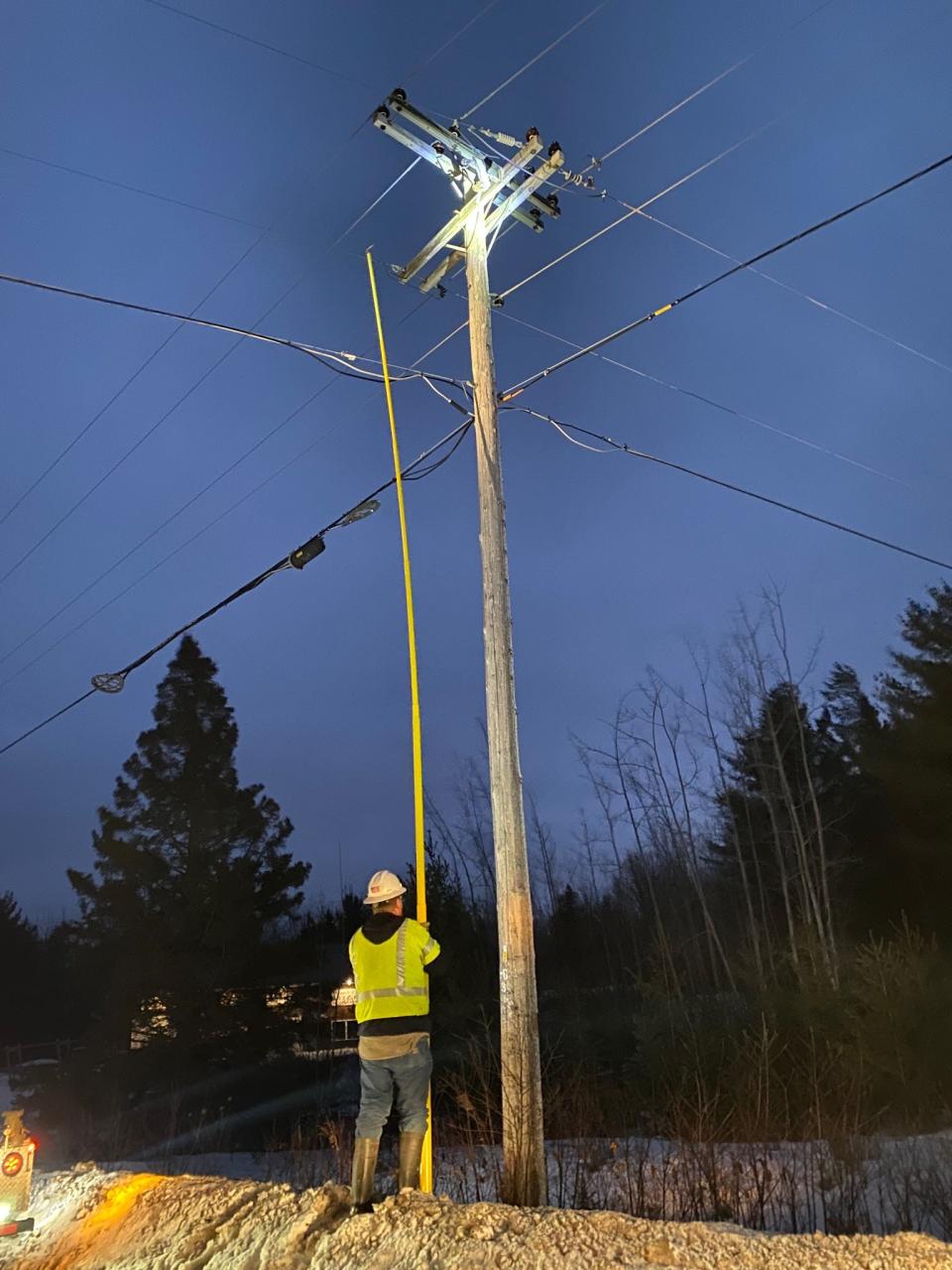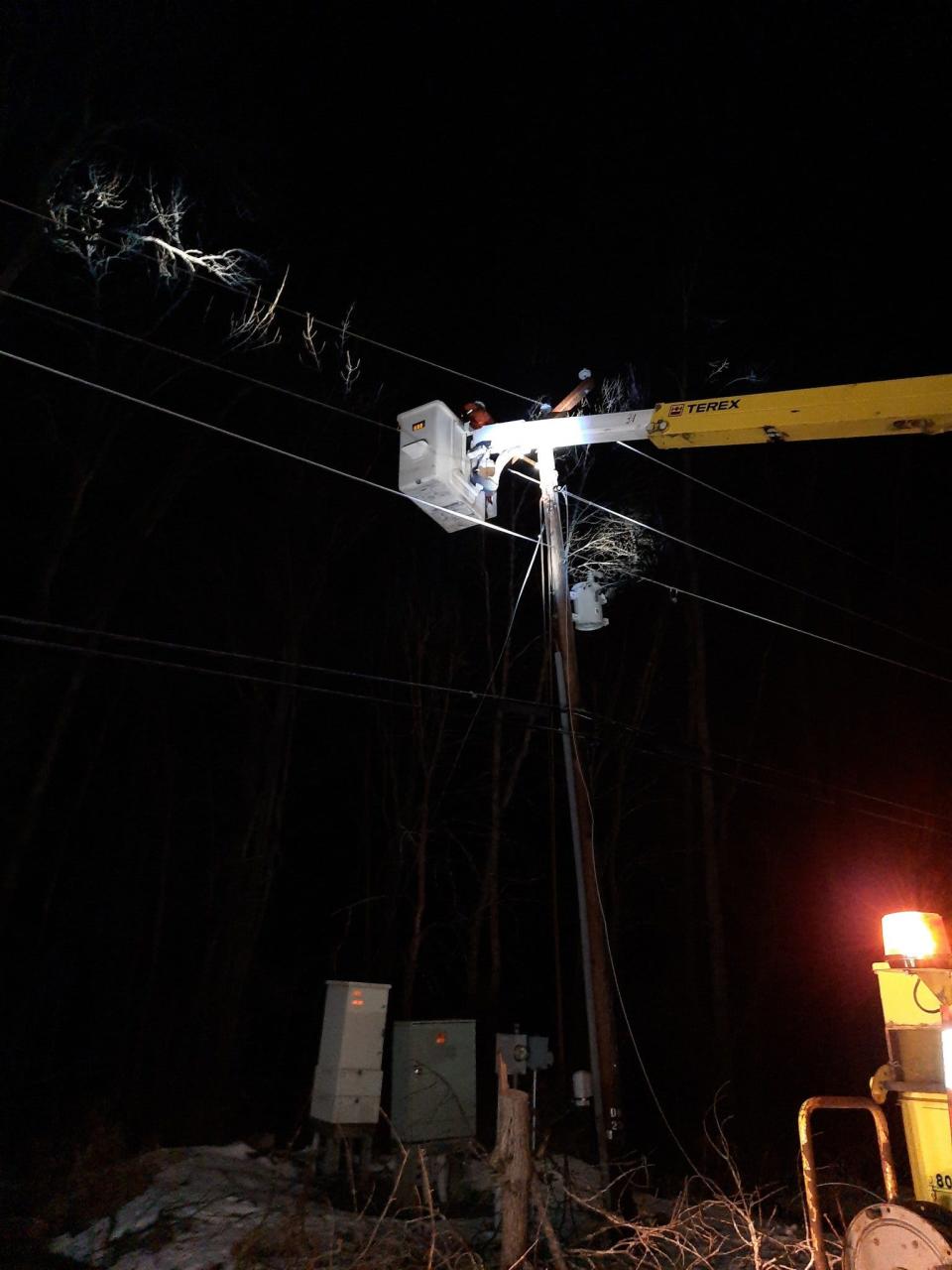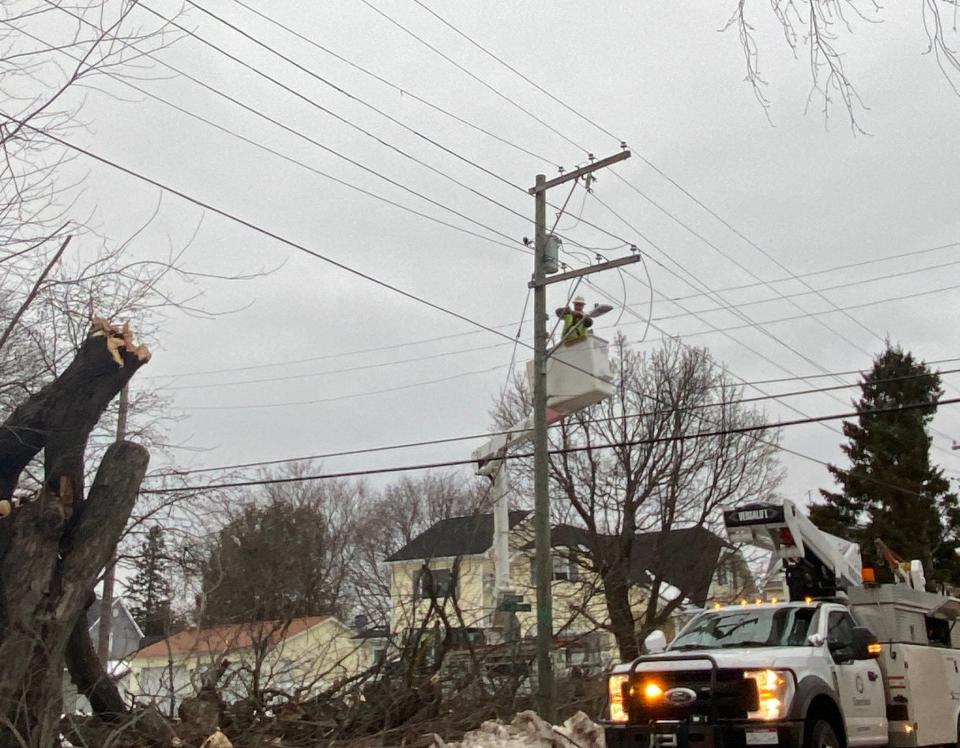Thousands of Upper Peninsula residents without power after wind storm
UPPER PENINSULA — The windstorm that occurred in the Midwest earlier this week left thousands of Upper Peninsula residents without power for days.
The National Weather Service Gaylord Office warned Michiganders of wind gusts of 45 to 60 miles per hour Thursday night through the overnight hours. A high wind warning was issued from the U.S. National Weather Service, which extended from 10 p.m. Wednesday to 8 p.m. Thursday. This warning advised residents of gusts up to 60 miles per hour.
The severe storm system that moved through the Midwest caused power outages for one-third of Cloverland Electric Cooperative’s membership across its Eastern Upper Peninsula service territory. Cloverland Electric Cooperative reported its first couple hundred outages at 10:45 p.m. Wednesday night. However, at 10 a.m. on Thursday, there were close to 10,000 outages across 200 different locations.

“We know that going without power is extremely difficult, particularly overnight with no exact certainty of restoration times,” said Cloverland President and CEO Mike Heise in a press release. “We appreciate the understanding of our members and their patience, understanding and support for our crews working tirelessly in harsh weather conditions.”

All Cloverland crews across five divisions worked to restore power following the storm. One mutual aid crew has been secured to assist with restoration efforts. Crews worked around the clock to address broken poles and trees on power lines.
From Wednesday evening to Friday morning, line crews had restored over 21,000 outages. As of 8 a.m. on Thursday, crews continued to tackle 5,500 outages in more than 150 locations.
Across the state, tens of thousands of outages were reported following the severe storm.
More: Thousands experience outages in Northern Michigan after wind event
More: High winds take out Michigan power lines, just days after crews finished restoring them
“Storm recovery becomes lengthy when it is especially difficult to get additional help from mutual aid when the storm system hit the entire Midwest,” said Cloverland’s director of operations Paul Warner in a press release. “All utilities are in the same circumstance, so we’ll rely on our dedicated line crews to get the job done.”

Jeff Lutz, a meteorologist with the National Weather Service office near Gaylord, said the storm was caused by an area of low pressure moving out of eastern Colorado. The low pressure produced strong winds and helped produce a strong cold front that created severe thunderstorms and tornadoes in Iowa and Wisconsin. As the low moved north into western Lake Superior, the warm front moved through the Sault area, producing rain showers and 20 to 30 mile-per-hour wind with gusts to 45 miles per hour overnight.
“Once the low moved north of Lake Superior, the cold front moved in from Wisconsin and began to produce strong winds across Eastern Upper and Northern Lower Michigan,” said Lutz in an email. “This also had the effect of smoke from Kansas being trapped in the lowest levels of the atmosphere, roughly between the surface and 5,000 feet, and pushed northeast toward Michigan. Due to the low-pressure center being closer to Eastern Upper Michigan, the wind gusts were high, but not as high downstate. As you approach the center of low pressure, the change in pressure, which is what drives the wind, begins to lessen, and so do the winds.”
According to the National Oceanic and Atmospheric Administration National Weather Service Storm Prediction Center, Wednesday set the record for the most number of hurricane-force thunderstorm wind gusts in a day since 2004. Hurricane-force thunderstorm wind gusts are gusts 75 miles per hour and over and there were at least 55 recorded that day. The previous record was from Aug. 10, 2020, with 53.
Cloverland Electric reminded the public to stay clear of downed power lines and report them by calling 1-800-562-4953 or local law enforcement agencies. Cloverland encouraged members with internet access or mobile data to stay tuned to www.cloverland.com and Cloverland Electric’s Facebook page for the latest updates on outages and restoration efforts.

— Contact News Reporter Taylor Worsham at tworsham@sooeveningnews.com.
This article originally appeared on The Sault News: Thousands of Upper Peninsula residents without power after wind storm

